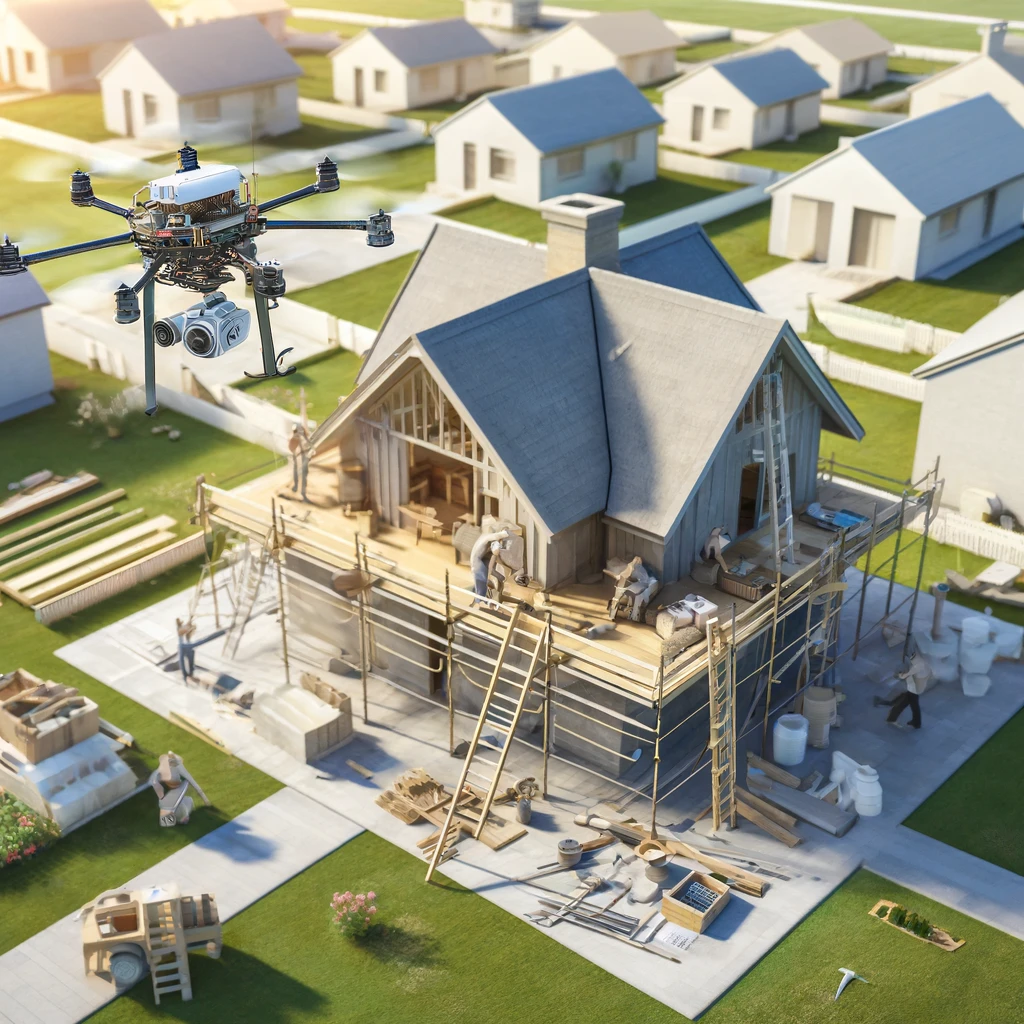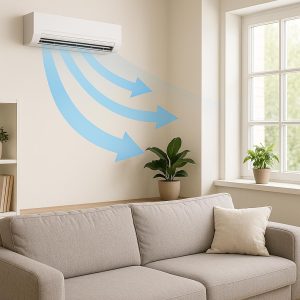
Introduction
Drones, also known as unmanned aerial vehicles (UAVs), have evolved from being mere toys or tools for aerial photography to essential instruments in various industries. One of the most exciting and innovative applications of drone technology is in home renovation and improvement. This article delves into the multifaceted uses of drones in this sector, exploring their benefits, applications, and the future potential they hold for transforming how we renovate and improve our homes.
The Rise of Drones in Construction and Renovation
A Brief History
Drones were initially developed for military purposes, but their commercial and civilian applications have expanded dramatically over the past two decades. The construction industry, known for its slow adoption of new technologies, has started to embrace drones for their efficiency, accuracy, and ability to access hard-to-reach areas.
Why Drones?
The use of drones in home renovation and improvement is driven by several factors:
- Efficiency: Drones can perform tasks quickly, reducing the time required for inspections, surveys, and data collection.
- Accuracy: Equipped with advanced sensors and cameras, drones can capture high-resolution images and precise measurements.
- Safety: Drones minimize the need for workers to perform dangerous tasks, such as inspecting rooftops or other high-risk areas.
- Cost-Effectiveness: By reducing labor and time costs, drones can significantly lower the overall expense of renovation projects.
Applications of Drones in Home Renovation and Improvement
Site Inspection and Surveying
One of the primary uses of drones in home renovation is site inspection and surveying. Traditional methods often require scaffolding or ladders, which can be time-consuming and hazardous. Drones, on the other hand, can quickly fly over and around a property, capturing detailed images and videos that provide a comprehensive overview of the site.
Roof Inspections
Inspecting roofs can be dangerous and challenging. Drones equipped with high-resolution cameras and thermal imaging can easily assess the condition of a roof, identify leaks, damage, and other issues without the need for a physical inspection. This not only speeds up the process but also ensures safety.
Structural Assessments
Drones can be used to perform structural assessments by capturing detailed images and 3D models of a building’s exterior. This helps in identifying structural issues, such as cracks, deteriorations, and other defects that may not be visible from the ground. Engineers and architects can use this data to plan necessary repairs and improvements accurately.
Progress Monitoring
For larger renovation projects, keeping track of progress can be challenging. Drones can provide regular aerial footage, offering a bird’s-eye view of the construction site. This helps project managers and homeowners monitor the progress, ensure that timelines are being met, and make informed decisions.
Landscaping and Garden Design
Drones are also useful in landscaping and garden design. They can map out a property, providing detailed topographical data that can be used to design and plan outdoor spaces. This ensures that the landscaping complements the overall aesthetic of the home while being functional and sustainable.
Thermal Imaging for Energy Efficiency
Improving energy efficiency is a significant aspect of modern home renovation. Drones equipped with thermal imaging cameras can detect areas of heat loss in a home, such as poorly insulated walls, roofs, and windows. This information is invaluable for planning energy-efficient upgrades, such as adding insulation or replacing windows and doors.
Benefits of Using Drones in Home Renovation
Time Savings
One of the most significant benefits of using drones is the time saved. Tasks that traditionally took days or weeks can now be completed in a matter of hours. For instance, a detailed roof inspection that might take an entire day can be done in under an hour with a drone.
Enhanced Accuracy and Data Collection
Drones provide a level of accuracy that is hard to achieve with manual methods. High-resolution cameras and advanced sensors can capture minute details, ensuring that no aspect of the renovation is overlooked. This precise data collection is crucial for planning and executing renovation projects efficiently.
Improved Safety
Safety is a paramount concern in any construction or renovation project. Drones reduce the need for workers to perform risky tasks, such as climbing ladders or scaffolding. This not only enhances safety but also reduces the likelihood of accidents and associated costs.
Cost-Effectiveness
While the initial investment in drone technology may seem high, the overall cost savings are significant. By reducing labor costs, minimizing delays, and improving the accuracy of renovations, drones can substantially lower the total cost of a project.
Enhanced Communication and Collaboration
Drones facilitate better communication and collaboration among stakeholders. Aerial footage and detailed images can be shared with architects, engineers, contractors, and homeowners, ensuring everyone is on the same page. This enhances decision-making and streamlines the renovation process.
Challenges and Considerations
Regulatory Compliance
One of the primary challenges of using drones is navigating the regulatory landscape. In many regions, drone use is subject to strict regulations, including licensing, flight restrictions, and privacy concerns. It is essential to ensure compliance with local laws to avoid legal issues.
Training and Expertise
Operating drones requires specialized skills and training. Homeowners and contractors need to invest in proper training to ensure safe and effective use of drones. Additionally, understanding how to interpret the data collected by drones is crucial for making informed renovation decisions.
Privacy Concerns
Privacy is a significant concern when using drones, especially in residential areas. It is essential to respect the privacy of neighbors and ensure that drone operations do not intrude on private property without permission. Clear communication and adherence to privacy laws are vital.
Technical Limitations
While drones offer numerous benefits, they also have technical limitations. Battery life, weather conditions, and signal interference can affect drone operations. It is essential to plan drone flights carefully and be prepared for potential technical challenges.
The Future of Drones in Home Renovation
Advancements in Technology
The future of drones in home renovation looks promising, with ongoing advancements in technology. Improvements in battery life, camera quality, and sensor capabilities will enhance the functionality and efficiency of drones. Additionally, the integration of artificial intelligence and machine learning will enable drones to perform more complex tasks autonomously.
Increased Adoption
As the benefits of using drones become more apparent, their adoption in the home renovation industry is expected to increase. More contractors and homeowners will recognize the value of drones in enhancing efficiency, accuracy, and safety. This increased adoption will drive further innovation and development in drone technology.
Integration with Other Technologies
The integration of drones with other technologies, such as Building Information Modeling (BIM), augmented reality (AR), and virtual reality (VR), will revolutionize the home renovation industry. Drones can provide real-time data that can be used to create accurate 3D models and simulations, enhancing planning and decision-making processes.
Sustainable Renovation Practices
Drones can play a significant role in promoting sustainable renovation practices. By providing detailed data on energy efficiency and environmental impact, drones can help homeowners and contractors make informed decisions that reduce the environmental footprint of renovation projects. This aligns with the growing trend towards sustainability in the construction industry.
Conclusion
Drones are transforming the home renovation and improvement industry, offering numerous benefits such as enhanced efficiency, accuracy, safety, and cost-effectiveness. From site inspections and roof assessments to progress monitoring and energy efficiency evaluations, drones provide valuable data that enhances the planning and execution of renovation projects. While there are challenges to overcome, such as regulatory compliance and privacy concerns, the future of drones in home renovation looks promising. As technology continues to advance and adoption increases, drones will play an increasingly integral role in modernizing and improving our homes.

